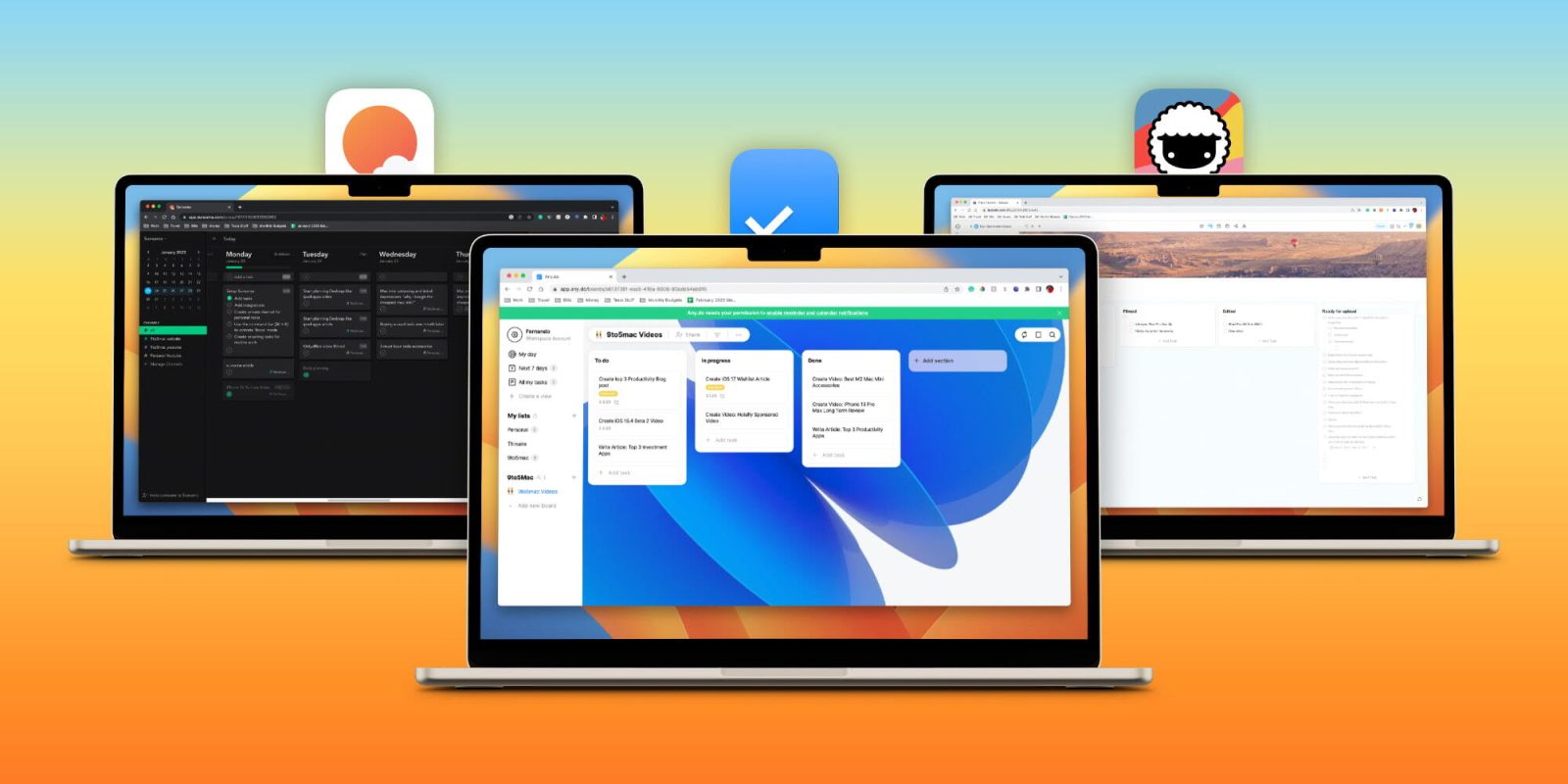
It seems as if our daily lives continue to get increasingly busy, from both a professional and personal perspective. Whether it’s remembering to email an important client or buying a gift for your child’s birthday, there is always something looming – a task that needs to be done. Like many others, I used to think I could just keep tasks in my head and remember everything that I needed to do. A few years ago, I started using task management apps to help structure everything I needed to get done. They have become essential tools that I use to run my everyday life.
I wanted to highlight three applications that have stood out to me as useful and effective, each with its own secret sauce: Taskade, Any.Do, and Sunsama. Let’s take a closer look at each of these apps and what makes them so great.
Before we get started
I am an active user of all three of these platforms, and I think they are all great in their own way. The goal is to show you each of them and see if they fit into your daily life. At the end of the day, use the app or service that works best for you and helps you accomplish your goals.
1. Taskade
Taskade has been the longest-tenured task management app that I have used. It is a powerful and flexible task management app that allows users to create and manage tasks, notes, and projects with ease. One of the key features of Taskade is its ability to create hierarchies of tasks and subtasks, which makes it easy to break down larger projects into smaller, more manageable steps. That is where the name came from, the idea of cascading lists with different levels of importance. The app also supports collaboration, making it an excellent choice for teams and groups. Taskade is an extremely robust app with many features that can help with simple to-do lists or a larger project involving multiple people and moving parts.
Workspaces
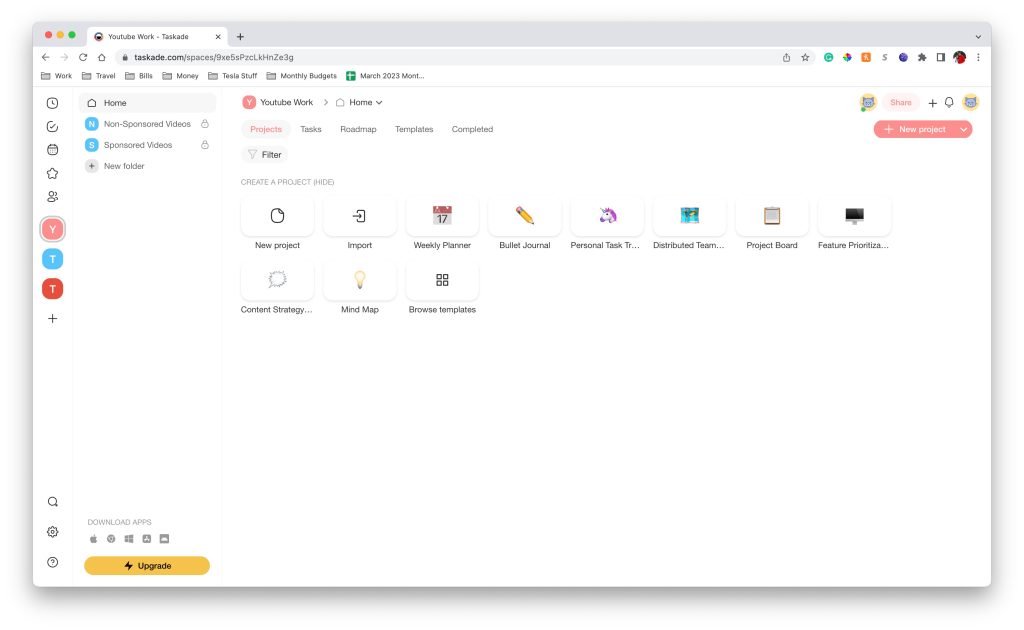
Taskade’s interface is intuitive and customizable, allowing users to create a workspace that suits their needs and preferences. What drew me to this app was the use of workspaces to divide all of my tasks. I have a workspace for YouTube work that only I can see, another for shared work with colleagues, and then a personal one as well. Once you break down into these workspaces, there are also multiple ways to view your task. Their mind map feature might be my personal favorite.
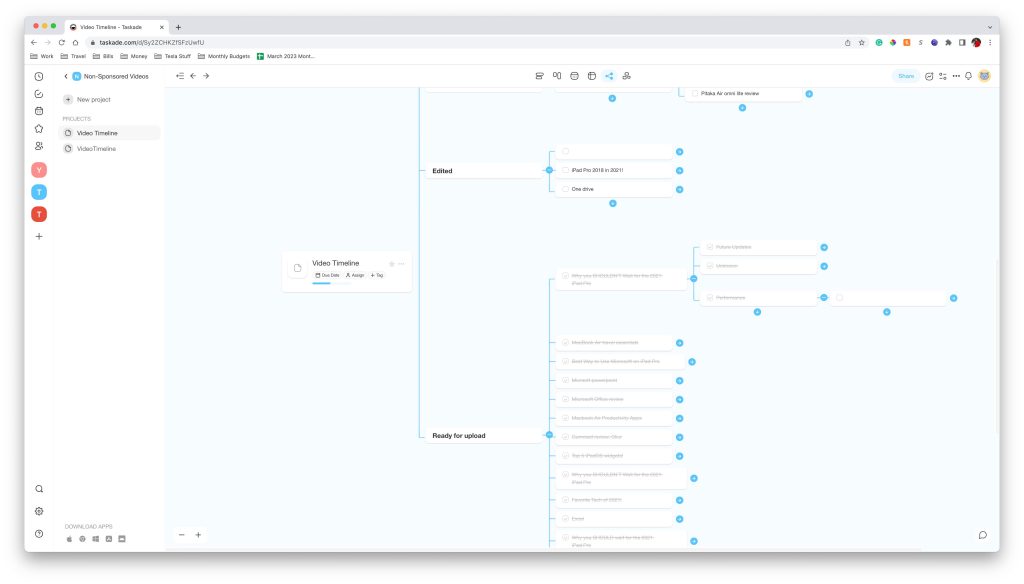
The app also supports integrations, including Google Drive, Slack, and Trello, which makes it easy to incorporate Taskade into your existing workflow. Overall, Taskade is a versatile and user-friendly task management app that is well suited for individuals and teams alike.
Pricing and availability
Taskade does have a few tiers when it comes to licensing costs. But what I love about it is that if you are just looking for a personal task management tool, then the free version is more than enough. Taskade does not restrict features on the free version – they just restrict the quantity. I would recommend trying the free version for yourself to see if it’s something you want to integrate into your professional workflow! See pricing below:
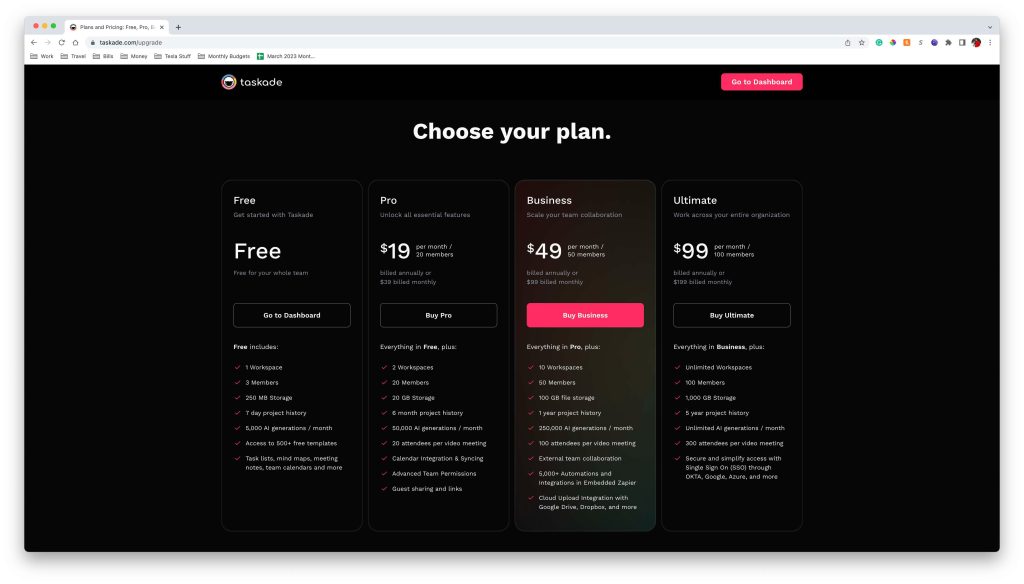
2. Any.Do
This is the new kid on the block. I have been using Any.Do for a few months now, and three main things stood out to me. First was the UI. It’s easy to use, self-explanatory, no real tutorials needed to get started, and it’s pleasant to look at. Secondly is the dashboard. The dashboard provides a no-frills view of the tasks that need to get done. You simply log in, and the first thing you see is your To-Do’s. Then it gets broken down into projects into more specific project tasks. Lastly, the Scrum board feature works amazingly. Being able to create a project and then move it along a chronological timeline has been a lifesaver for my work.
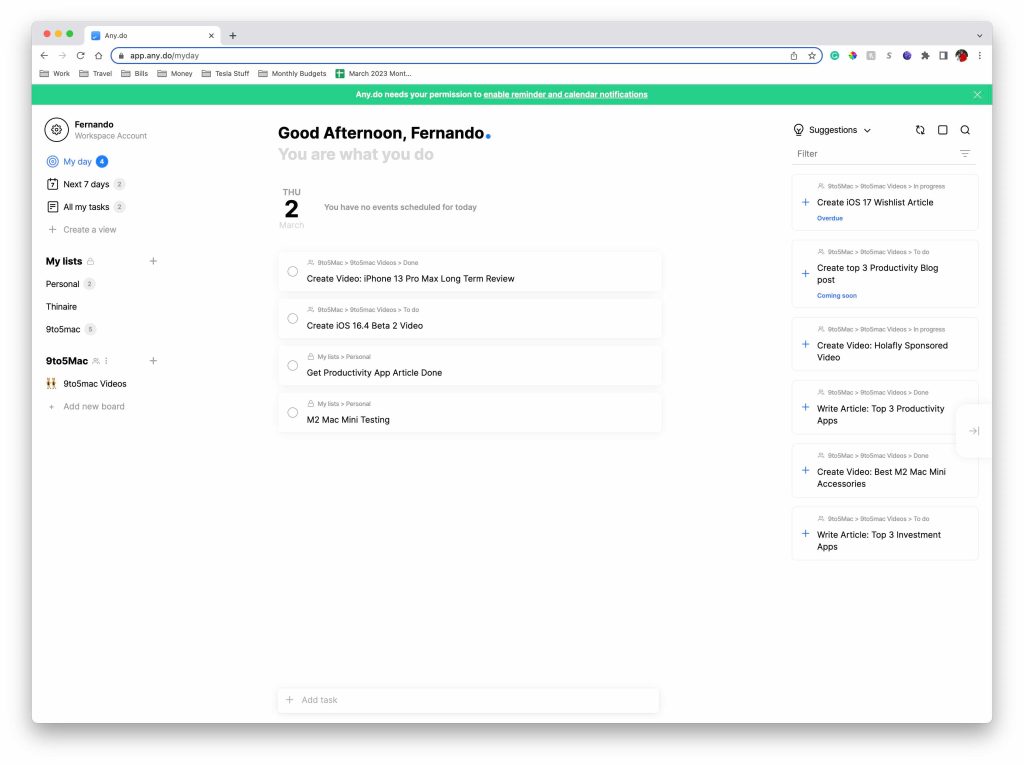
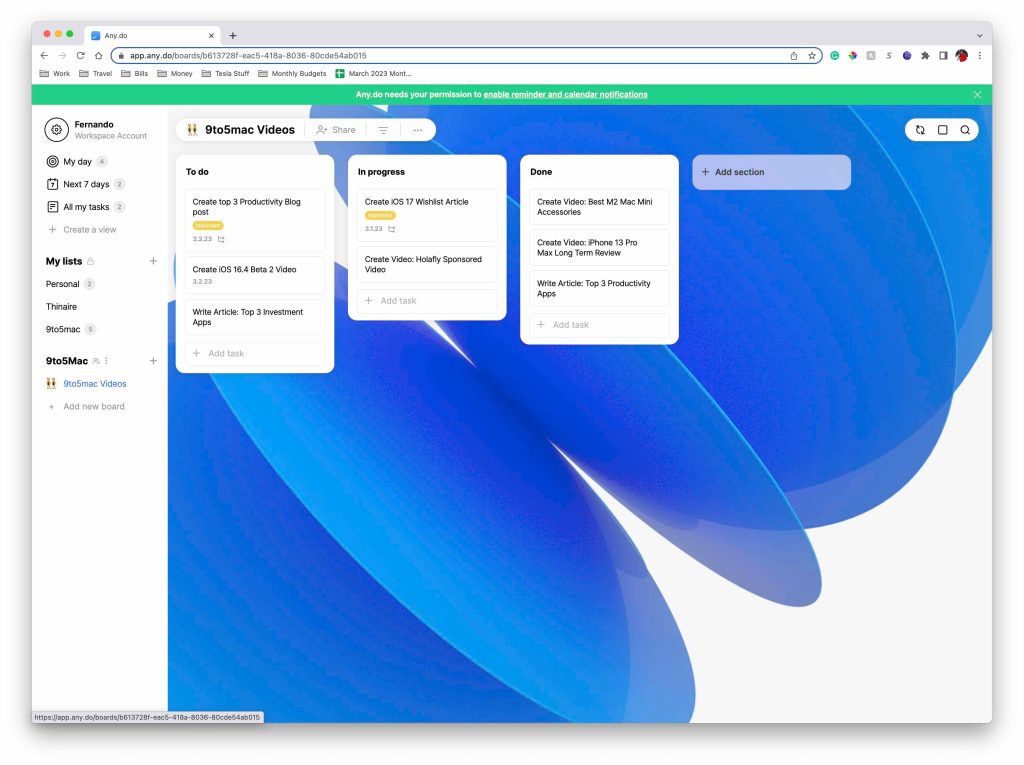
Daily view, My Lists, & Workspaces
Similarly to Taskade, Any.Do breaks down your tasks into three main views: the dashboard view, the My lists view, and workspaces. All of these views work together to help accomplish your task. You start by creating list categories. You then start to put tasks in those lists. Once that is done, you can drag those tasks into your daily dashboard view to get them accomplished. Finally, you can elaborate on those tasks inside of the workspace view. The workspace view is the only view that is shareable with others, which is great in team settings.
Any.Do also includes a number of useful features, such as the ability to set reminders, add notes to tasks, and attach files to tasks. The app also integrates with a wide range of other productivity apps, including Google Calendar, Evernote, and Slack. Overall, Any.do has been an absolute pleasure to use due to its simplicity while also being extremely feature rich.
Pricing and availability
Any.Do also takes a tiered approach to how they price their service. They do provide a free tier that allows you to use everything besides workspaces. Again, I recommend trying the free version to see if it’s worth it to you to upgrade. They do provide a 14-day free trial for their highest tier, which will help show off some of the awesome features. The pricing is also very reasonable at $3/month for the Premium tier and $5/month for the Teams tier.

3. Sunsama
Sunsama is the final task management app I wanted to mention. They take a unique approach to productivity. Rather than focusing solely on tasks and projects, Sunsama is designed to help users plan and prioritize their time more effectively. The app encourages users to think about their goals and objectives, and then helps them create a daily schedule aligned with those goals. The idea is that it’s OK to let tasks bleed into the following day instead of losing sleep trying to finish everything at once.
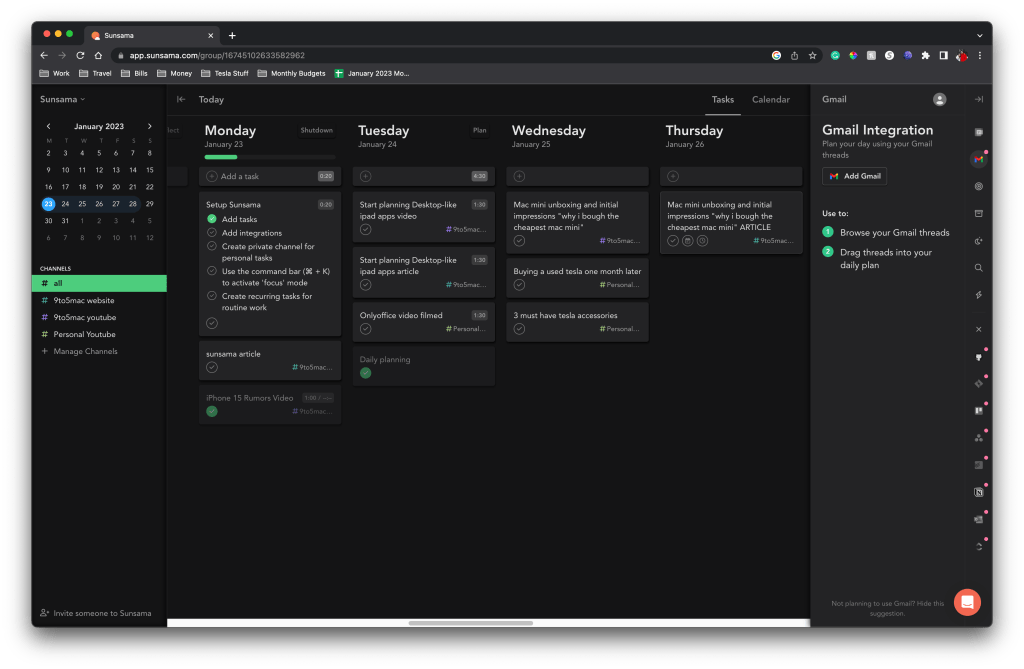
The Sunsama daily routine
Every time you log into your Sunsama dashboard for the first time, it takes you through a daily exercise. It lets you know what you accomplished yesterday and what you plan to accomplish today, and it helps you prioritize your tasks. The idea is similar to waking up and writing down what you are grateful for – Sunsama wants to start your day in a positive light by showing you what you accomplished. We have an in-depth article about Sunsama if you want to dive in a bit more.
Sunsama lays out your tasks in a calendar view. It makes you write down each individual task and then drag them to the date that you wish to complete them. It also gives you the ability to integrate with other productivity apps, such as Asana, Trello, and Google Calendar. This allows users to easily import tasks and events from other apps into Sunsama and to see all of their tasks and events in one place. So if you have a 10:30 meeting in your Google Calendar, it will show up in your Sunsama view.
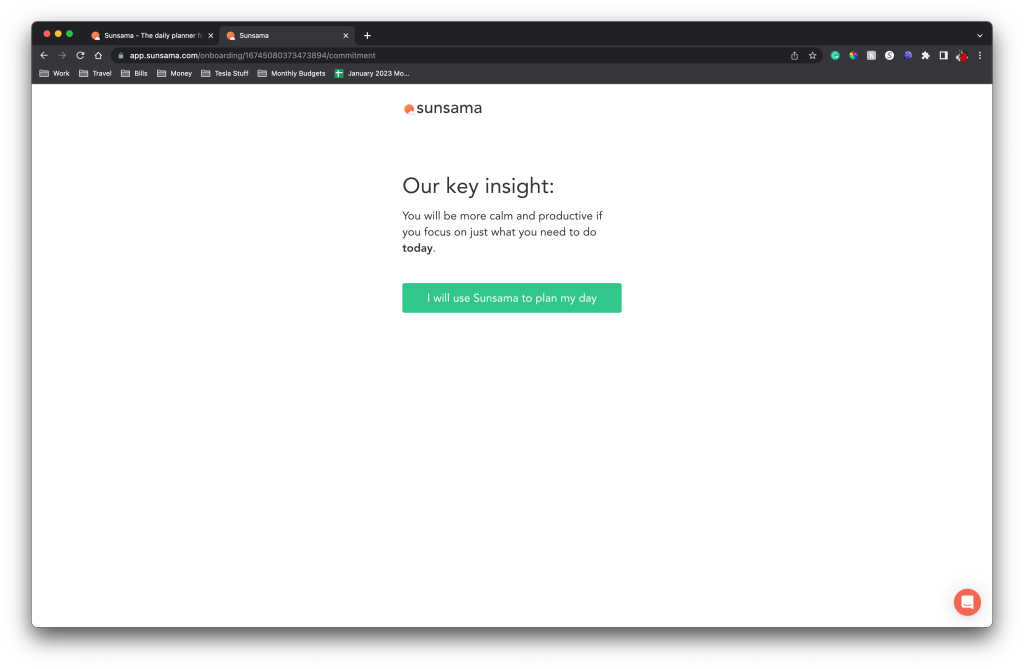
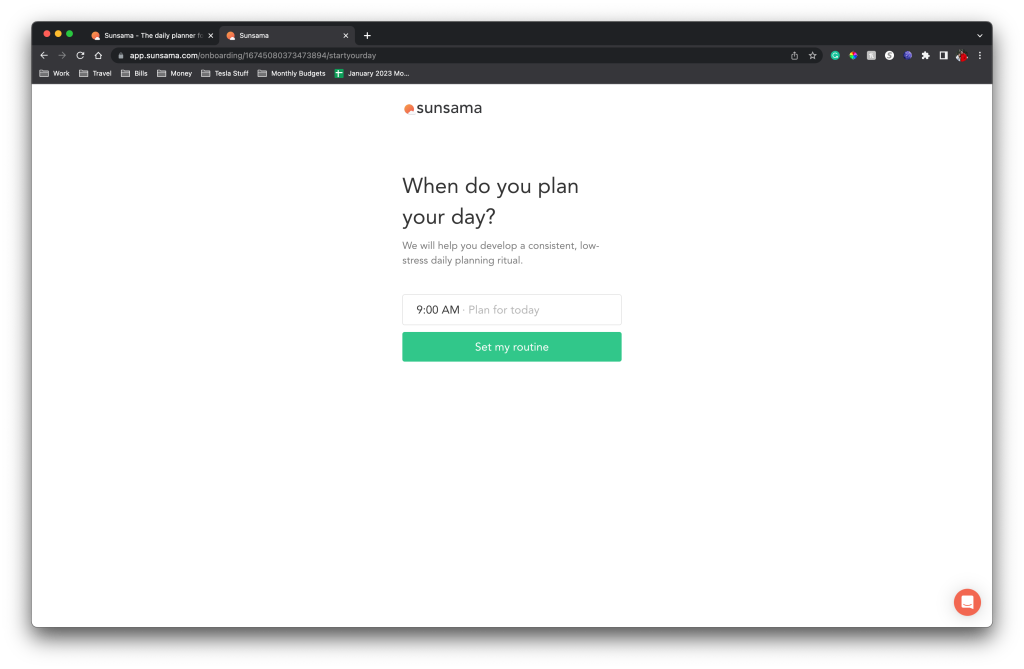
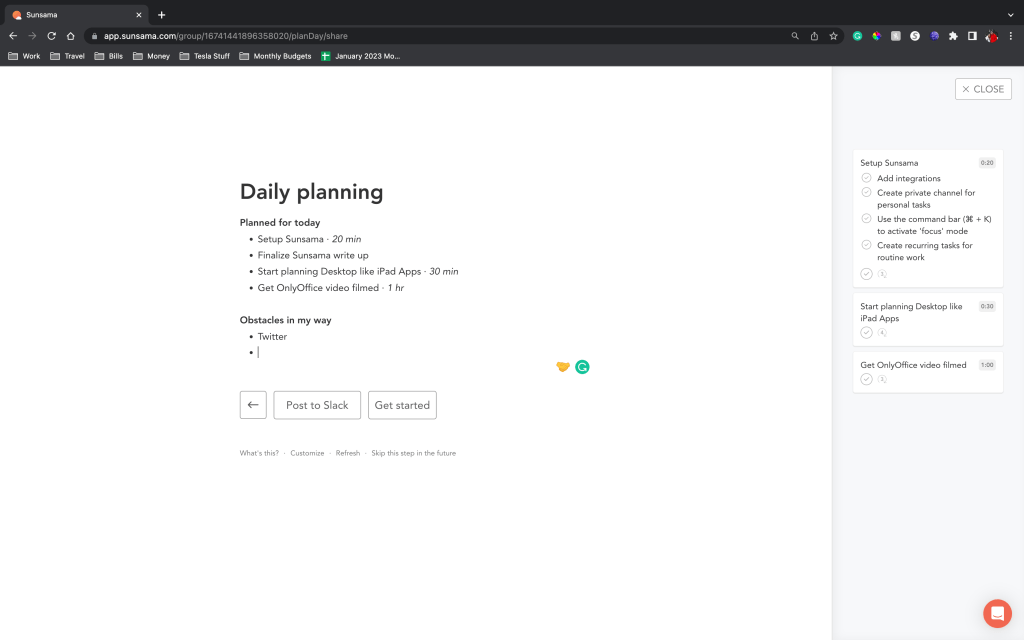
Sunsama’s interface is clean and simple, making it easy to use and navigate. You can separate tasks based on channels or tags and categorize these tasks easily; the UI makes it easy to get a full view of your priorities. Overall, Sunsama is an innovative and effective tool for anyone looking to improve their productivity and time management skills.
Pricing and availability
Sunsama is the one platform that is a paid service. They do provide a 30-day trial by clicking here to let you play with the entire app. There is no feature cap to the free trial. One interesting thing is that they let you restart your free trial after 30 days, but they start you from scratch. So they remove all of your existing tasks and calendars. After the trial, it’s $16/month to use them – well worth it, in my opinion!
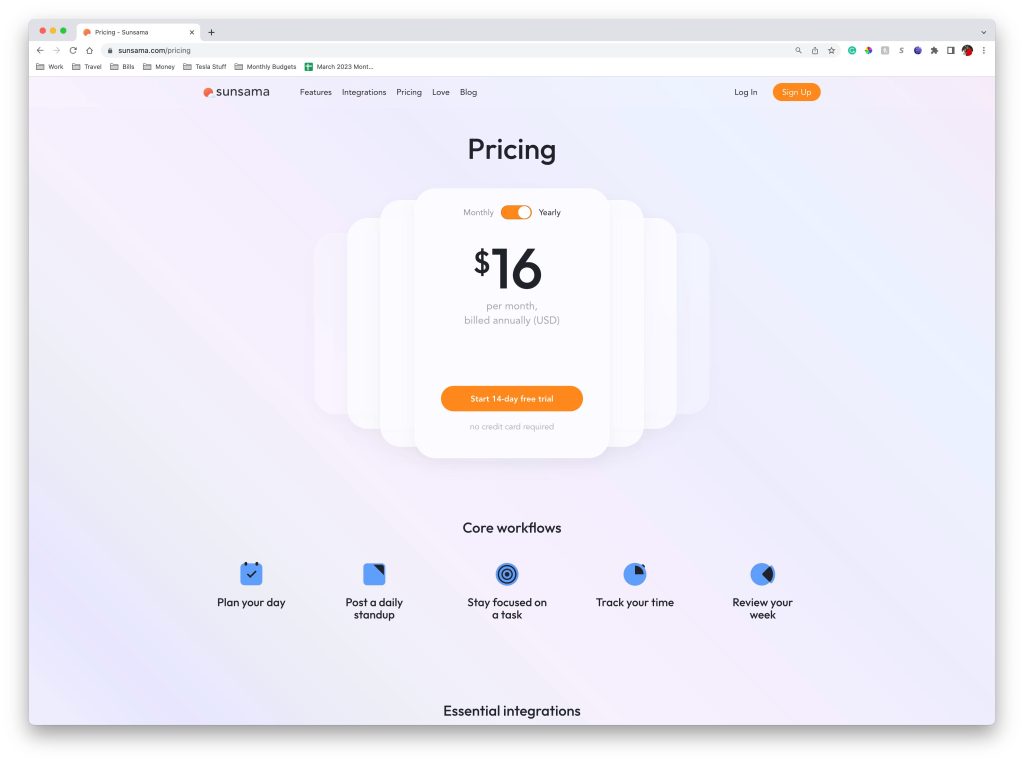
Wrap up
As I mentioned in the intro, I recommend using what is best for you! If the Apple notes app gets the job done, then stick to it! But if you are looking for something extra that provides a bit more functionality, then giving one of these a try is well worth it. They each have either a free tier or a free trial, so there is no harm in trying them.
They all have a corresponding iOS app as well. I will say that Any.Do has the best iOS app because it has most of the features of the macOS version; the iOS apps for Sunsama and Taskade are a bit more of a watered-down version of the desktop apps.
What do you think? Which of these apps or services are you more willing to try and why? What is a task management app that you use that was not mentioned? Let’s discuss this in the comments!
Add 9to5Mac to your Google News feed.
FTC: We use income earning auto affiliate links. More.






